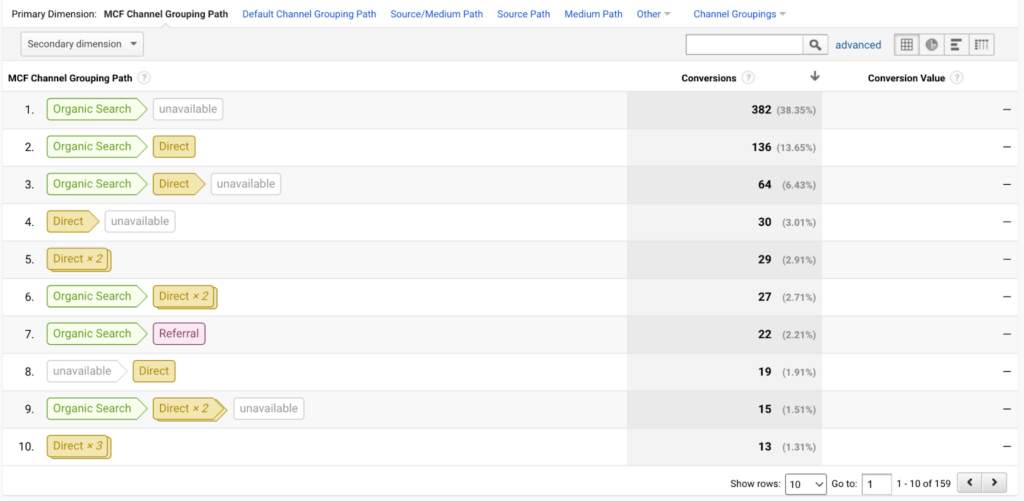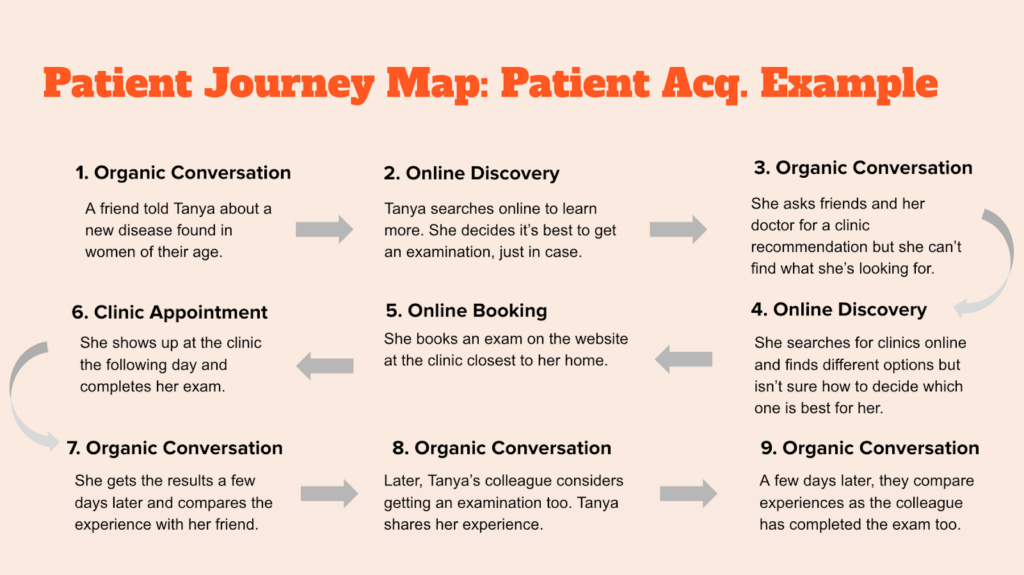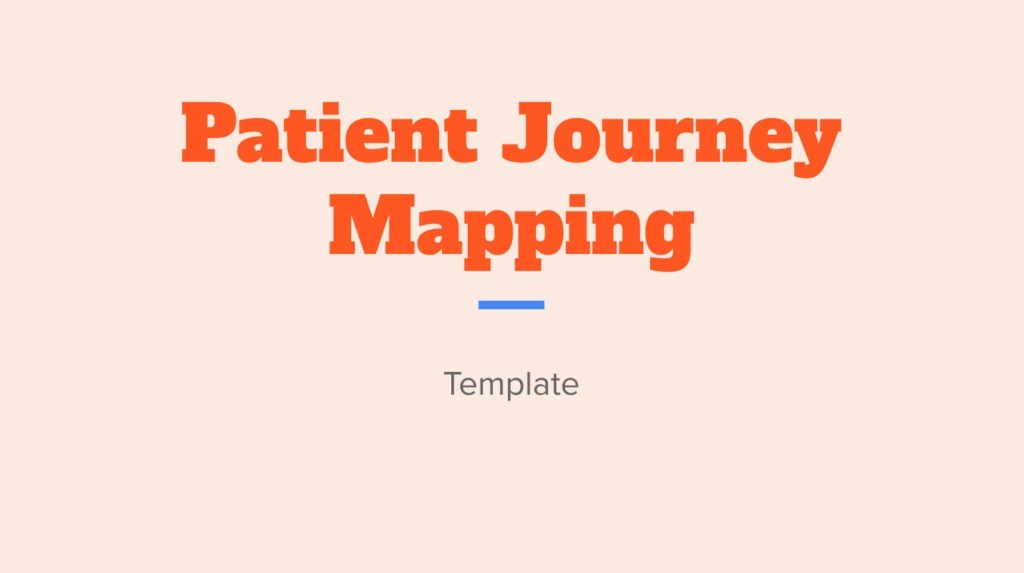These days, there is a concern in venture capital funding around using performance marketing ads to drive patients through the patient journey maps.
There’s no problem with performance marketing in and of itself but what often happens is that the startups come to depend on it to grow because their product isn’t strong enough to keep customers around.
That can become a problem in the long run if we assume that we can scale the existing performance, squeeze more out, or even just keep the same baseline level going until we find a new and better path to patient acquisition.
The landscape might change, the ads might decay faster than expected, or an ad platform might change its terms. The concern from the venture community is justified but it doesn’t have to be the only way.
In this article, we’ll dive into a patient journey that has worked well for me to drive digital sales and patient acquisition specifically for clinics, and we’ll look into the hidden steps in the digital patient journey maps that we often aren’t able to see in our tracking and analytics tools. One of the biggest improvements to digital campaigns is not necessarily optimizing the weakest link in the chain but rather spotting the hidden steps and optimizing those.
The patient journey for multi-specialty clinics is tricky because there is a myriad of care specialties and many of them have unique use cases that naturally cause the patient to take different journeys. For example, for eye care, a journey through Facebook ads might perform well whereas the same journey might not work for primary care.
Let’s begin by looking at typical patient journey maps for customer acquisition.
The hidden steps in your healthcare patient journey map
There are many different types of patient journey maps that show the road from discovery and interest to completed appointments. One that is easily accessible and relevant for patient acquisition is this conversion path analysis in Google Analytics.

Digital patient acquisition channels come with a number of useful things such as tracking but they can also easily mislead us as they tend to be missing a few crucial steps. Let’s first look at an example from the popular channel: search.
Patient journey path example: search ads
For example, if we leverage search traffic, our customer journey path might look as simple as this: search > click to website > booking.

Traffic coming directly from organic search or paid search ads might suggest a simple flow where patients discover us and follow the campaign flow we’ve built: from search results to a landing page followed by a confirmation booking. Alternatively, it might take a few steps such as organic search followed by going back to the website via a direct hit.
Another example: Facebook ads
The example below could be an extension of the path in the example above with the patient’s social media research mixed in.

Facebook ads are all the rage these days, so let’s take that channel as another example. A patient found us via our Facebook ads campaign, went to look the clinic up on search or went directly to the website and booked.
Since both of these examples are based on conversions, they’ve obviously been driving something so it is reasonable to assume that things might continue in the same way on a bigger scale.
The question is how many of those conversions were influenced by invisible steps throughout the sales funnel that we are not aware of and if the steps we do see as visible were the only ones influencing the booking.
A real-world patient journey example
Like a good cooking show on TV, I’ve cheated a little and prepared an example of what it looks like in some markets based on my experience driving thousands of patient bookings with digital marketing.
I’d like you to meet Tanya The Teacher. You can read her details in this article on patient personas if you’d like. But for now, all you need to know is that this example is focused around customer acquisition and that Tanya is looking for a care specialist.

These are Tanya’s patient journey map in steps:
- A friend of Tanya told her about a new disease found in women of their age
- Tanya searches online to learn more. She decides it’s best to get an examination, just in case.
- She asks friends and her doctor for a clinic recommendation but she can’t find what she’s looking for.
- She searches for clinics online and finds different options but isn’t sure how to decide which one is best for her.
- She books an exam on the website at the clinic closest to her home.
- She shows up at the clinic the next day and completes her exam.
- She gets the results a few days later and compares the experience with her friend.
- Later, Tanya’s colleague mentions the same thing and wonders whether she should get an examination too. Tanya shares her experience.
- A few days later, they compare experiences as the colleague has completed the exam too.
Put into a patient journey map, it looks like this:

It shows several invisible steps that are untrackable with analytics systems, meaning that they won’t show up in our flow maps. In the example below, using the same patient journey, I’ve highlighted the organic conversations that are hard for us to track with this little red, spiky, bubble:

We can see that out of these nine steps, more than half are organic conversations with people close to the patient. Not only is it enabling the online discovery when Tanya’s friend told her about a new disease she heard about, but after Tanya’s examination she has conversations with a colleague and the pattern repeats itself with another patient (the colleague).
That suggests two untrackable organic conversations leading up to the appointment booking and another three after, leading to at least one referral, which may come out to two bookings in total depending on the clinic the colleague chose.
These organic “semi-referral” conversations, whether about the disease itself or the specific clinic, are plastered all over our patient journeys and are hard to discover but key to building a well-performing one.
Patient journeys like these also seem to suggest that many patients discover and book these types of appointments online only if there are no better options and they can’t get insights from the people closest to them.
Other patient journey maps
You might want to dive deeper and have your team on the clinic floor create a patient journey map for the steps when a patient enters the clinic (e.g. going to the counter, waiting, going to the examination room, back to the counter, etc.) if that’s a part of what you are looking to focus on. It can be easier for them to cover all the small nuances as they look at how patients behave within the clinic every day.
If you suspect there might be a problem with retention, you could also create a patient journey map for the behavior and process between visits including if you send them any marketing material like email.
Healthcare patient journey map example: retention
We could also reuse the above slide from patient acquisition for retention like so:

To get a good overview and help colleagues get up to speed, I like to consolidate everything into one simple patient journey overview before diving deeper into each section.

The patient journey template
If you want to get a head start, you can copy my patient journey mapping template here (the template itself is not editable but if you click FILE > MAKE A COPY, you’ll get your own copy to edit).

Recap: how to use the template
- I suggest recording the entire experience to get into the mind of the potential patient having symptoms and looking for a solution
- Ideally, we’d do one for each type of care specialty, their major use cases, and for different main types of patients but since that’s a lot of work, I suggest starting with those where we know that optimizing the patient journey will lead to a meaningful impact on growth. For example, by starting with the most popular service.
- Consider creating a journey map of your top competitor(s) and compare them with your own – did they have any ideas you could implement?
We can do this fast by imagining a family member or close friend you know is going to a clinic: be really specific about which type of care they are looking for, why, how you imagine they’ll react to the diagnosis, and if they will ask friends and family for a second opinion. Another alternative that I prefer is to interview your existing patients.
Takeaways
- A patient journey map is a useful way to spot bottlenecks in certain areas of growth, especially in digital patient acquisition
- It makes sense to both create an overview of the patient journey from discovering the clinic and having the first visit through several services and even compare those with competitors to get ideas
- Make the patient journey mapping as close to a real-life scenario as possible by using real-world personas (perhaps of someone you know as an example) and screenshots or recordings for each step. It will help you anticipate how the patient might feel as they go through each step in the experience
Other, frequently asked questions:
The patient journey often shows the patient’s experience from the first symptoms through potential treatment until the patient is well again. It can also span multiple visits depending on what the patient journey in question is focused on.
The journey is usually shown visually via a chart that follows each step the patient takes such as researching symptoms, finding the best clinic, and gathering recommendations from friends and family.
It helps us get an overview of the patient’s entire experience and potential holes or bottlenecks that we can fill to persuade them to book or stay loyal to us. With so many steps, it’s easy to forget a few things that break the experience like a patient not being able to track their pharmacy delivery or get reminders for their upcoming appointment.
It also helps us get in the patient’s head, read their mind and visualize where we can help them. For example, with Facebook ads, we will need to send a different message than with a search ad but leads coming from both channels can eventually be merged into the same funnel down the road. It also gives us ideas for new care services or patient experiences to develop as an extension of the business to increase revenue.
The first thing we have to do is decide what this patient journey is for and how much we should include.
Is it only for bringing new patients in the door? Is it for deepening the monetization? Or is it an entire journey across products, marketing, etc. because we don’t know where the problem with the biggest impact is yet?
When we’ve decided, the next step is to write down every single step the patient has to take from the starting and endpoint we’ve decided. That includes every button they would click, every person they would talk to, and anything else they do. I like to add screenshots or video recordings of each step so it’s easier to follow the flow and spot opportunities or problems.
For example, if you have a startup with an app and this journey map is only for marketing about acquiring new patients, it might start with someone searching on Google and end with an in-app booking confirmation page.
A patient flow is displayed on a chart showing how a patient flows through our different experiences e.g. first by talking with a doctor via telemedicine followed by an in-person examination, and so on. Later in this article, we’ll dive into three different examples of patient flow charts.
The digital patient journey is a little different than the non-digital one as it requires us to build more trust with the patient since we don’t have the luxury of the trust we normally build in-person offline when a patient meets a doctor.
In exchange for the uphill battle in gaining trust, we get access to a huge volume of potential patients. The best benefit we can gain from the digital patient journey is to use it as an extension of the traditional journey rather than as a replacement. An in-person consultation with a physician feels like a more trustworthy experience than a digital one via telemedicine for many patients for example.
The digital patient journey shines in most things outside of the consultation or examination itself and is often an affordable way to offer extra service. That could for example be with reminders before a consultation with documents the patient needs to bring, or a patient journal automatically updated by the physician and pharmacist directly in the app.
It could also be a digital help desk to help answer common questions so the patient doesn’t have to call to get the answer.
